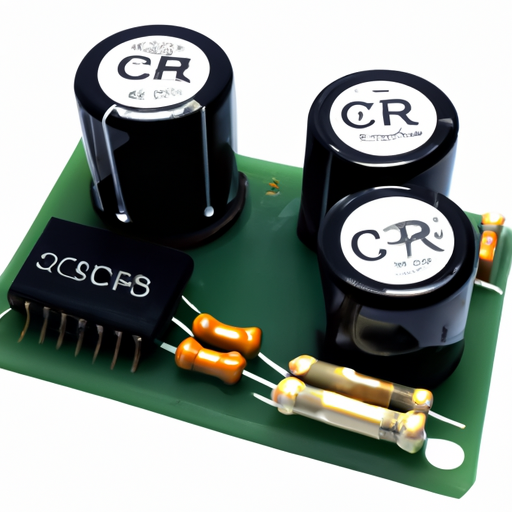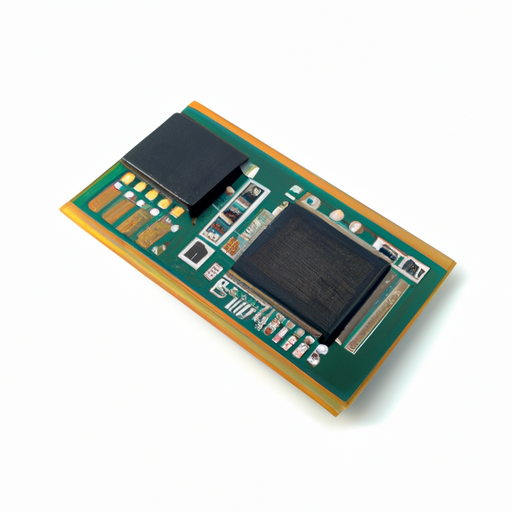What is a capacitor and what is its role in practical applications?
What is a Capacitor and What is Its Role in Practical Applications?
I. Introduction
Capacitors are fundamental components in the world of electronics, playing a crucial role in various applications that range from simple circuits to complex systems. A capacitor is defined as a passive electronic component that stores electrical energy in an electric field. This ability to store and release energy makes capacitors indispensable in modern technology. The history of capacitors dates back to the 18th century, with the invention of the Leyden jar, one of the first devices capable of storing electrical charge. Over the years, capacitors have evolved significantly, leading to advancements that have enabled their widespread use in countless applications, from consumer electronics to renewable energy systems.
II. Basic Principles of Capacitors
A. Structure of a Capacitor
A capacitor typically consists of two conductive plates separated by an insulating material known as a dielectric. The plates are usually made of metal, while the dielectric can be made from various materials, including ceramic, plastic, or electrolytic substances. The arrangement of these components allows capacitors to store electrical energy when a voltage is applied across the plates.
B. How Capacitors Store Energy
When a voltage is applied to the plates of a capacitor, an electric field is generated between them. This electric field stores energy, which can be released when the capacitor is connected to a circuit. The amount of energy a capacitor can store is determined by its capacitance, which is measured in farads (F). Capacitance is a function of the surface area of the plates, the distance between them, and the properties of the dielectric material.
C. Types of Capacitors
There are several types of capacitors, each with unique characteristics and applications:
1. **Electrolytic Capacitors**: Known for their high capacitance values, these capacitors are polarized and typically used in power supply applications.
2. **Ceramic Capacitors**: These are non-polarized capacitors that are widely used in high-frequency applications due to their stability and low cost.
3. **Film Capacitors**: Made from thin plastic films, these capacitors are known for their reliability and are often used in audio and timing applications.
4. **Tantalum Capacitors**: These capacitors offer high capacitance in a small package and are commonly used in portable electronics.
5. **Supercapacitors**: Also known as ultracapacitors, these devices can store large amounts of energy and are used in applications requiring rapid charge and discharge cycles.
III. Capacitor Characteristics
Understanding the characteristics of capacitors is essential for selecting the right type for a specific application. Key characteristics include:
A. Capacitance
Capacitance is the primary measure of a capacitor's ability to store charge. It is influenced by the size of the plates, the distance between them, and the dielectric material used.
B. Voltage Rating
The voltage rating indicates the maximum voltage a capacitor can handle without breaking down. Exceeding this voltage can lead to failure or even explosion.
C. Equivalent Series Resistance (ESR)
ESR is a measure of the internal resistance of a capacitor, which affects its efficiency and performance in high-frequency applications.
D. Temperature Coefficient
This characteristic indicates how the capacitance value changes with temperature. Different applications may require capacitors with specific temperature coefficients to ensure stable performance.
E. Lifetime and Reliability
Capacitors have varying lifetimes depending on their type and application. Understanding the expected lifespan and reliability is crucial for applications where failure is not an option.
IV. Role of Capacitors in Practical Applications
Capacitors serve multiple roles in practical applications, making them versatile components in electronic circuits.
A. Energy Storage
1. **Power Supply Smoothing**: Capacitors are used in power supply circuits to smooth out voltage fluctuations, ensuring a stable output. They store energy during peak loads and release it during low demand, maintaining a consistent voltage level.
2. **Energy Storage in Renewable Energy Systems**: In renewable energy systems, such as solar and wind, capacitors help store excess energy generated during peak production times, allowing for a more stable and reliable energy supply.
B. Signal Processing
1. **Filtering Applications**: Capacitors are essential in filtering circuits, where they help remove unwanted frequencies from signals, allowing only the desired frequencies to pass through.
2. **Coupling and Decoupling in Circuits**: Capacitors are used to couple signals between different stages of a circuit while blocking DC components. They also decouple power supply variations, ensuring stable operation of sensitive components.
C. Timing Applications
1. **Oscillators and Timers**: Capacitors are integral to timing circuits, where they work with resistors to create time delays or oscillations, essential in clocks and timers.
2. **Delay Circuits**: In delay circuits, capacitors charge and discharge at specific rates, creating controlled delays in signal processing.
D. Motor Start and Run Applications
1. **Induction Motors**: Capacitors are used in single-phase induction motors to provide the necessary phase shift for starting the motor. They help improve the motor's efficiency and performance.
2. **Capacitor Start vs. Capacitor Run Motors**: Capacitor start motors use a capacitor only during startup, while capacitor run motors use a capacitor continuously to improve efficiency.
E. Audio Applications
1. **Tone Control**: In audio equipment, capacitors are used in tone control circuits to adjust the frequency response, allowing users to enhance or reduce specific audio frequencies.
2. **Speaker Crossover Networks**: Capacitors are crucial in crossover networks, directing different frequency ranges to appropriate speakers (woofers, tweeters) for optimal sound quality.
V. Emerging Technologies and Future Trends
As technology advances, so does the role of capacitors in various fields.
A. Advancements in Capacitor Technology
1. **Development of New Materials**: Researchers are exploring new dielectric materials that can enhance capacitance and reduce size, leading to more efficient and compact capacitors.
2. **Miniaturization and Integration**: The trend towards smaller electronic devices drives the need for miniaturized capacitors that can be integrated into circuit boards without compromising performance.
B. Role of Capacitors in Electric Vehicles
Capacitors are increasingly used in electric vehicles (EVs) for energy storage and management, helping to improve efficiency and performance. They play a vital role in regenerative braking systems, where they store energy generated during braking for later use.
C. Capacitors in Renewable Energy Systems
1. **Grid Stabilization**: Capacitors are essential in stabilizing power grids, especially with the increasing integration of renewable energy sources that can cause fluctuations in supply.
2. **Energy Storage Solutions**: Capacitors are being explored as energy storage solutions in conjunction with batteries, providing rapid charge and discharge capabilities that can enhance overall system performance.
VI. Conclusion
Capacitors are integral components in modern electronics, serving a wide range of functions from energy storage to signal processing. Their importance cannot be overstated, as they enable the functionality of countless devices we rely on daily. As technology continues to evolve, the role of capacitors will expand, driven by advancements in materials and applications. The future of capacitor technology looks promising, with innovations that will enhance their performance and integration into emerging technologies. Ultimately, capacitors will remain a cornerstone of electronic design, shaping the future of technology and everyday life.
VII. References
1. Academic journals on electronics and electrical engineering.
2. Books on capacitor technology and applications.
3. Online resources and articles discussing the latest advancements in capacitors and their practical uses.







